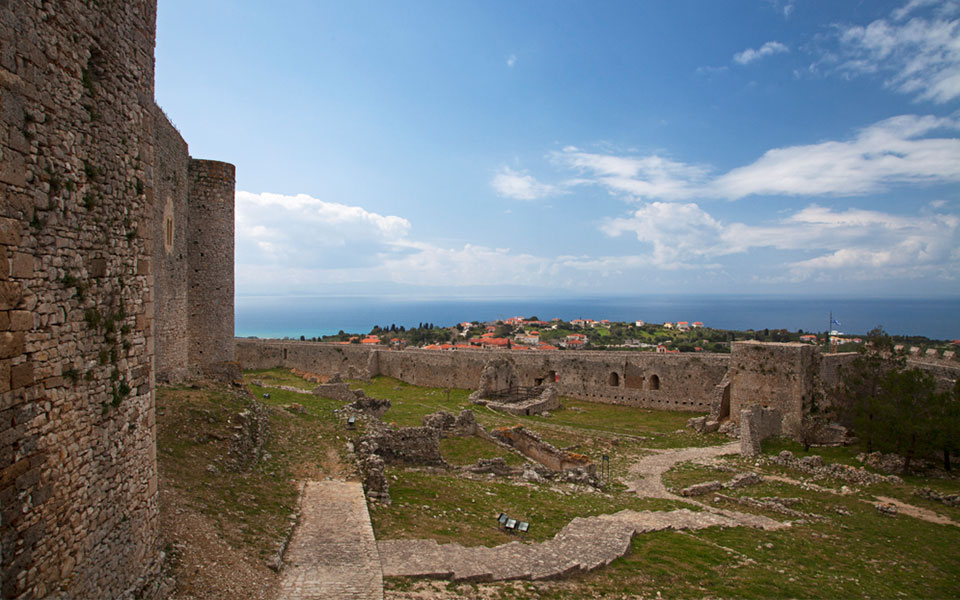Larissa Castle, Argos, Argolida
A timeless acropolis
The castle of Argos is called Larissa causing misunderstandings (a Greek city in Thessaly is also called Larissa) however, the word larissa has pre-Greek origins and means fortress. Although it is visible from the main road of Argos and is illuminated at night, therefore can be seen even from Nafplio, it is not very well known ̶ it is overshadowed by the neighboring castles of Palamidi, Akronafplia and Bourtzi.
This area has been fortified since the prehistoric times and was a lookout post over the sea and land roads to Attica and the Aegean ̶ given its unobstructed view to the surrounding area: the Argolic Plain and Gulf, to the east Mycenae, ancient Tiryns, the Arvanite villages, farther away Nafplio, mountains in the background and to the west the whole coastline up to Astros Kinourias.
Of course, it also protected Argos, one of the oldest cities in the world. Traces of the Mycenaean fortification and ancient walls are preserved in the timeless acropolis, however its current image comes mainly from the medieval era, from the Byzantines and the Franks who, according to archaeologists, made Larissa Castle one of the four strongest of the Peloponnese. Later on, the Turks also passed from here, as did the Greeks during the Greek Revolution, when Theodoros Kolokotronis manned it with an army under the command of Dimitrios Ypsilantis to delay the troops of Dramalis who was besieging Argos.
Info
The castle is open for the public all day long, with free entry; a dirt road leads to its entrance.

© Olga Charami
Kapetanaki Castle, Haravgi, Messinia
A Shelter of Chieftains
It is a private castle, a fortification complex of the kind that used to be built by the powerful families of Mani, whose society was traditionally kept inside war towers as if they were constantly at war. Georgakis Kapetanakis was a strong “captain”, i.e. one of the 14 local lords of Mani and the beautiful complex dating back to the 18th century is a typical sample of the local architecture and temperament.
However, it was its destiny to play a more important role during the Greek Revolution as the captains who took the lead against Ibrahim, who occupied Kalamata and the surrounding areas in May 1825, found refuge within its walls. One year later, during the famous battle of Verga, this small castle hid ammunition and chieftains, while the Kapetanakis family also participated in the front lines of the Greek Revolution.
Nikitas Mandrapilios was the master builder of this fortress-house, which has a fortification wall with a defensive circular tower, the main tower house, a church and various auxiliary buildings. Observe the wall with the battlements, the successive embrasures and the famous “cages” ̶ inverted cones like wasp nests, which protrude out the wall to offer freedom of movement and have small holes for the weapons.
Info
The castle is open for the public all day long, with free entry.

© Olga Charami
Chlemoutsi Castle, Andravida, Ilia
The jewel of the Franks
The great Greek author Nikos Kazatzakis writes: “When I entered through the narrow wide-open castle gate and crossed the ruined Gothic halls and courtyards, overgrown with weeds and grasped a wild fig tree to climb to the floor above and stood on a stone, I felt the urge to let out a shrill cry, like a hawk. A sudden joy overwhelmed me, as if time had started flowing rapidly in my mind and in a flash, the Franks came to the Peloponnese, chased it, filled it with blond-haired children and wild castles and perished … ». It refers to Chlemoutsi Castle, which, although relatively unknown to the general public, is one of the best preserved castles in Greece. It has been rinsing dominantly over the village of Kastro for eight centuries, from the era of Geoffrey I of Villehardouin, the time when the Franks’ favorite region, Kilini, in Ilia, experienced its greatest prosperity.
Byzantines, Catalans, Venetians and Turks passed by here for a while but only written sources bear testament to their presence. The Franks built it and led it to its acme, hence it is considered to be one of the best samples of Frankish fortress architecture in the Peloponnese and houses in its restored rooms a rare museum, dedicated to the time of the knights and the great prosperity of the Frankish rule.
Two courtyards, towers, vaulted entrances and of course an impressive view of the plain of Ilia and the Ionian Sea ̶ the castle also protected one of the most important ports of the Eastern Mediterranean, the famous port of Glarentza (today’s Kilini) as well as Andravida, the capital of the principality of Achaia.
Info
Open daily 8:30- 15:30, except Tuesdays.
Ticket: 4 euros











